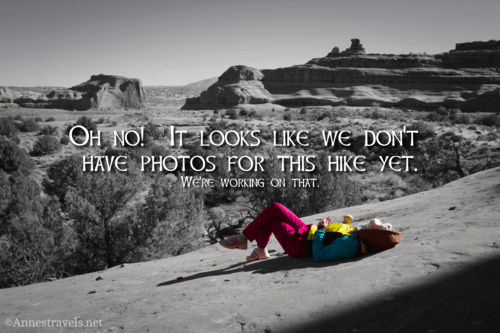
Smith Mountain – Death Valley National Park
Scramble up an unassuming but very pretty peak to fantastic views of the surrounding area.
| Total Distance: 5.6 miles out & back | Elevation Gain: 2,314ft. (3,806ft. to 5,923ft.) |
| Difficulty: Strenuous | 5-10 Mile Difficulty: Strenuous |
| View Rating: 4.0 out of 5.0 stars | Author’s Rating: 3.0 out of 5.0 stars |
| Visitor Rating: (Click to rate) [Total: 0 Average: 0] | Visitor Difficulty Rating: (Click to rate) [Total: 0 Average: 0] |
| Pets: No | Horses: Yes |
| Best Seasons: November-April | Special Permits: None |
| Water Availability: None | Overnight Options: Yes |
| Trailhead Amenities: None | Crowd Factor: Solitude |
| Trailhead Access: 2.0 (4×4 required) | |
| Uses: | Trail Surface: |
| Features: | Hazards: |
Mile-by-Mile: Smith Mountain
-1.9 Road Junction on left (west) on the Gold Valley Road (4,259ft.). This junction is 8 miles from the Greenwater Valley Road. Turn left onto the sideroad for 1.0 miles to a road junction. (36.021510°, -116.622747°)
-0.9 Road Junction (4,185ft.). Turning left would take you to some old prospects. You want to turn right for 0.9 miles – or thereabouts; it doesn’t matter exactly where you park as long as you’re in the right general area. (36.015804°, -116.635627°)
0.0 Approximate Smith Mountain Trailhead (3,808ft.). Walk pretty much due west toward an obvious major canyon. (Note: Smith Mountain is currently out of sight behind a false summit.) Drainages along the way make the seemingly flat terrain a bit more of a challenge than might be expected. Thankfully for easier walking, the terrain isn’t too brushy. Drop into the canyon’s wash about mile 0.8 and turn left (west) to continue to the canyon mouth. (36.026476°, -116.644756°)
1.25 Canyon Mouth (4,199ft.). This is approximate; the mouth is probably slightly downstream from here. Continue up the canyon, being careful to stay in the main drainage as it works its way upward. (If you’re not sure at the final fork, stay left to ascend toward the ridgeline.) About halfway up the canyon, you’ll come to a steeper, more difficult section – it still should be only Class 3. Another steep, possibly Class 3 obstacle is in the last 100 feet or so before you reach the flatter desert above the canyon – a steep scree slope. (36.025824°, -116.665999°)
2.3 Ridgeline (5,590ft.). From here, you can turn left (east) to ascend East Smith Mountain. But to climb Smith Mountain, turn right (west) to drop into a saddle and then ascend the peak. (36.018873°, -116.680524°)
2.8 Smith Mountain (5,923ft.). Enjoy spectacular views across the Black Mountains to Funeral Peak, across Death Valley to Telescope Peak and the Panamint Range, Badwater Flats, and so much more. (36.018587°, -116.687044°)
History & More
Smith Mountain is named after Francis Marion Smith, otherwise known as “The Borax King” or “Borax Smith,” founder of the Pacific Coast Borax Company. The company became famous for 20 Mule Team Borax.
Views are better from the peak in the morning when views down on Death Valley (to the west) are lit rather than backlit by the sun.
Smith Mountain is the second-most-prominent peak in the Black Mountains (the most prominent is Funeral Peak).
The map of the route is approximate – please use common sense and don’t follow the map or directions at the expense of your safety!
Download Route Map
Driving Directions
From the Greenwater Valley Road, take the Gold Valley Road 8 miles. This is where the narrative begins; to get to the trailhead, turn left on the sideroad for 0.9 miles, then right on another dirt road for 0.9 miles the approximate area of the trailhead.
It is extremely dangerous to enter a mine due to unstable shafts, gasses, and more. Do not enter mines, even if they are apparently open!
Walking on, climbing, entering, ascending, descending, or traversing any mine, structure, feature, or ruin is prohibited.
Toxic chemicals or ore may be present around mine sites. Enter at your own risk.
Possessing, destroying, injuring, defacing, removing, digging, or disturbing any mine, structure, feature, or ruin is also prohibited.
Camping is not allowed within one mile of a paved road, developed area, or dirt road that is closed to camping.
Camping is not permitted within 100 feet of a flowing stream, spring, or other natural body of open water.
No camping is permitted on the floor of Death Valley, within one mile of Darwin Falls and Greenwater Canyon, on the active/shifting sand dunes, and certain other canyons and backcountry areas.
Camping is also prohibited within one mile of the Ubehebe Lead Mine, Leadfield Mines, Keane Wonder Mill, and Skidoo Mill.
Camping is limited to 30 days per calendar year within the park.
Fires are permitted in NPS-provided fire grates or grills ONLY.
Leave No Trace Principles are enforced
Drones and model aircrafts are prohibited
Camping is permitted only in designated sites or in areas open to dispersed backcountry camping
All park rules and regulations
12 Month Pass: $55/Death Valley Annual Pass (valid at Death Valley National Park). $80/America the Beautiful Annual Pass (valid at all national park and federal fee areas). $20/Annual Senior Pass (62 years or older US citizens; valid at all national park and federal fee areas). Free/4th Grade Pass (Valid Sept. 1-August 31 of the child’s 4th Grade school year). Free/Military Pass (valid for all active military personel and their dependents with a CAC Card or DD Form 1173).
Lifetime Pass: $80/Lifetime Senior Pass (62 years or older US citizens; valid at all national park and federal fee areas). Free/Access Pass (available to all US citizens with perminent disabilities). Free/Access for Veterans and Gold Star Families Pass (valid for all military and veterans with a CAC card, Veteran HJealth Identification Card, Veteran ID Card, or veteran’s designation on state-issued drivers license or identification card.)


